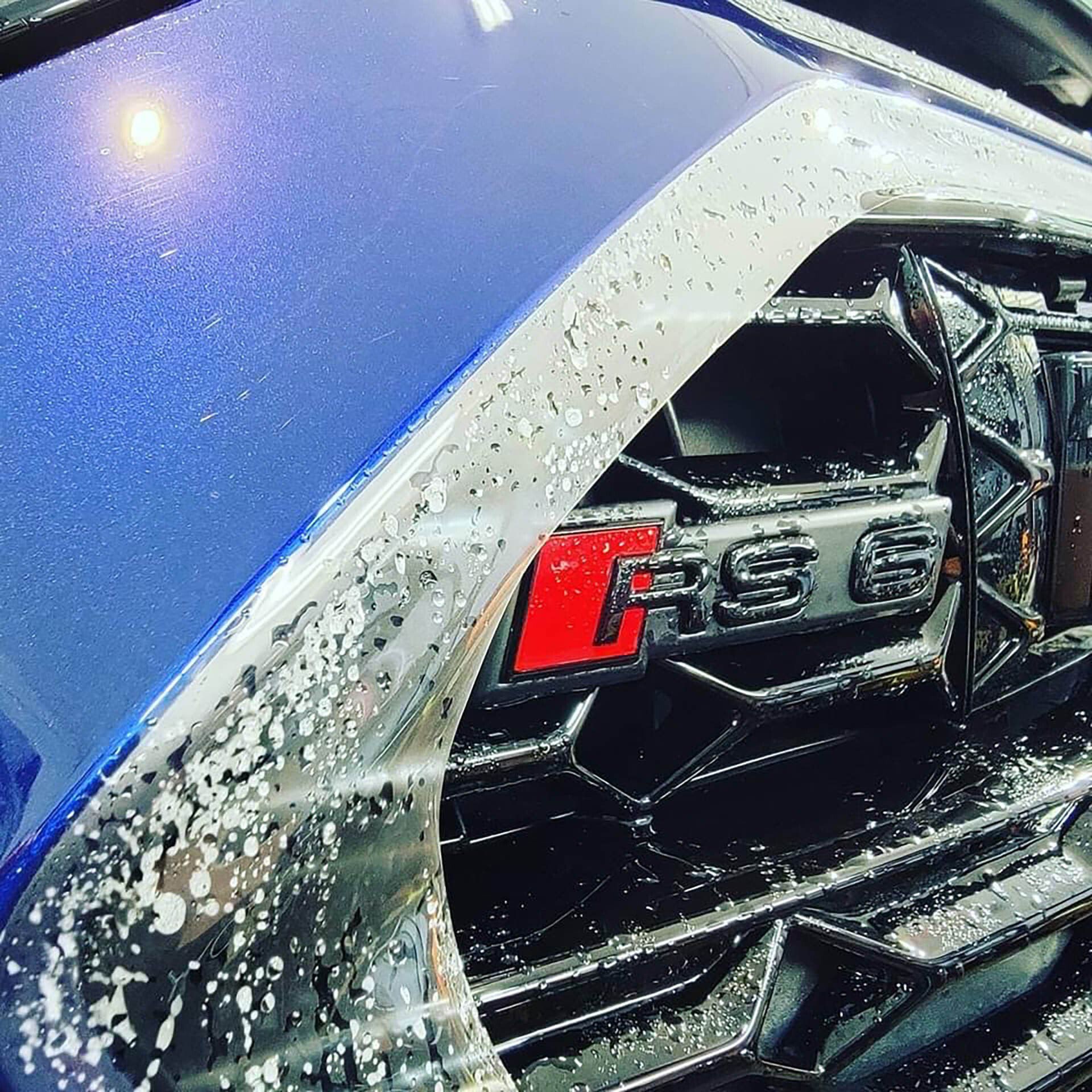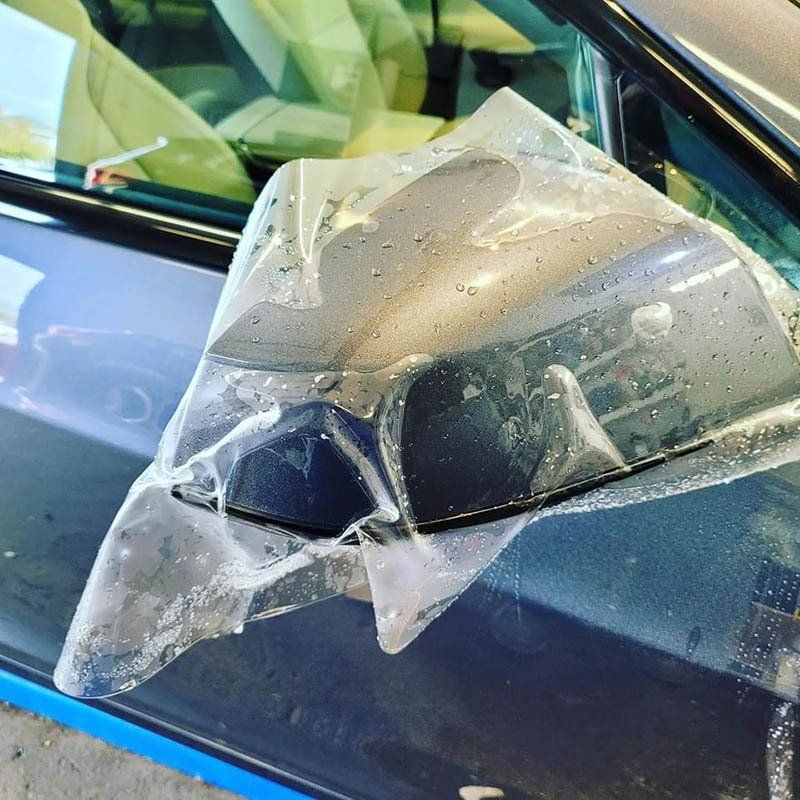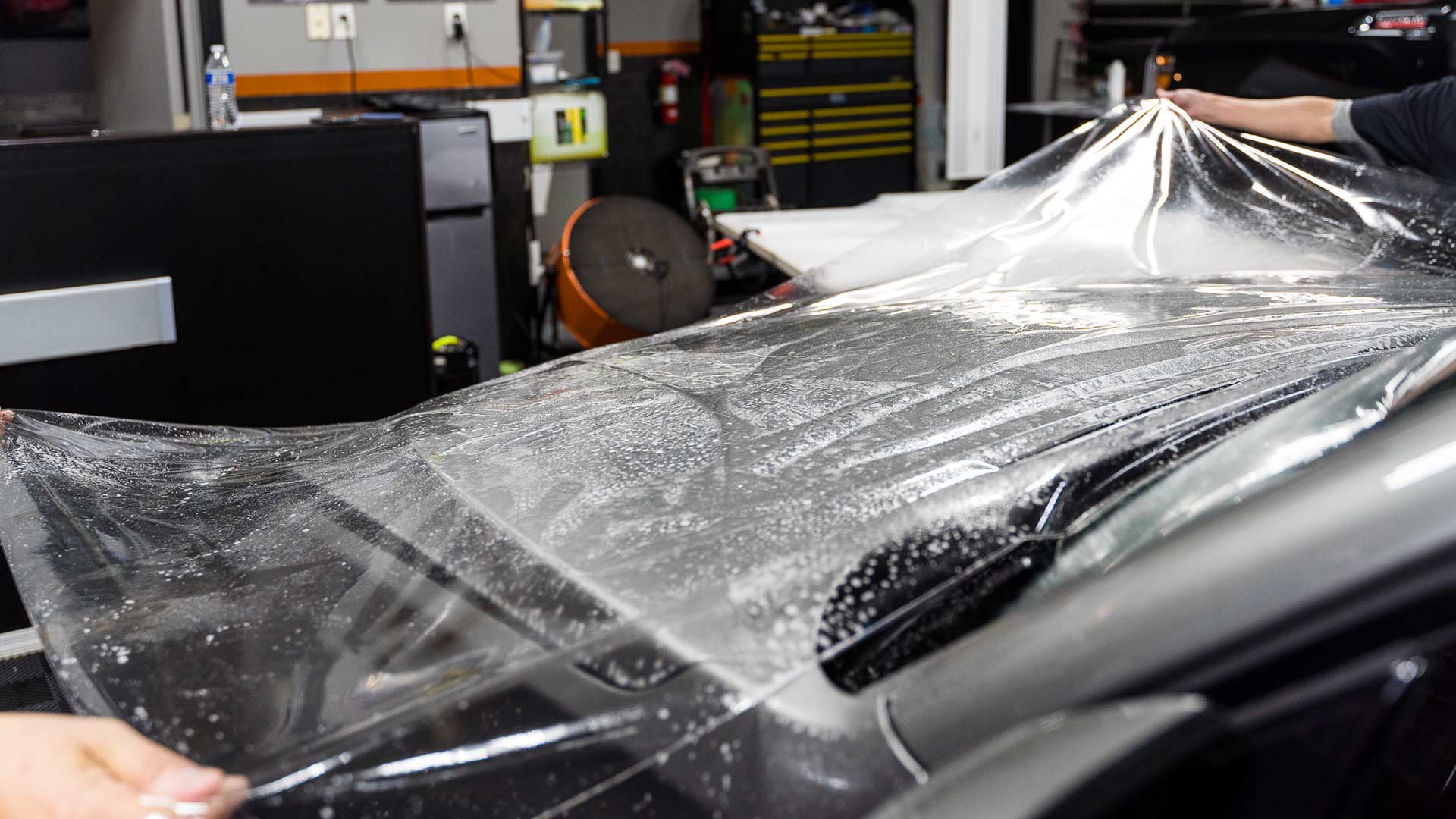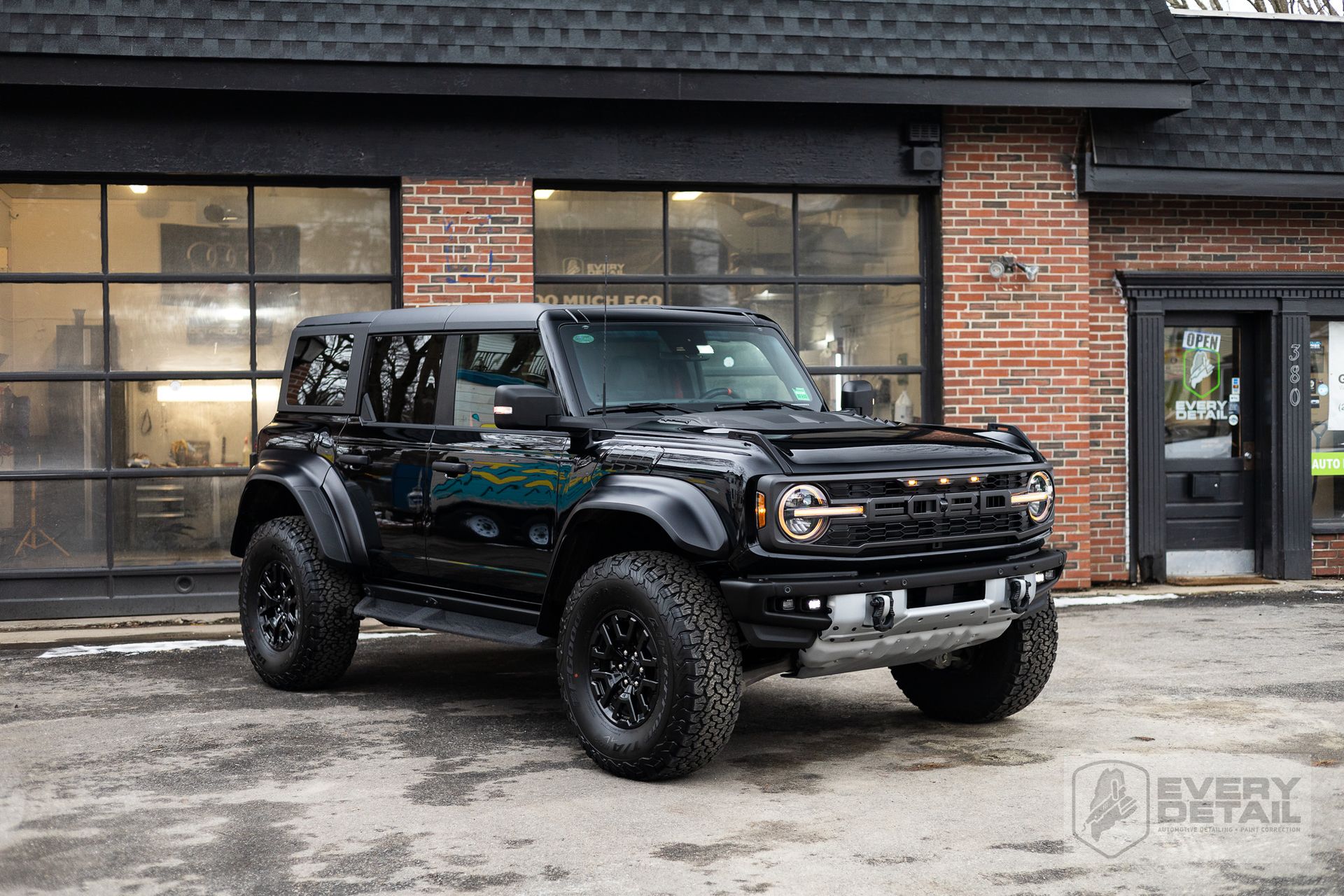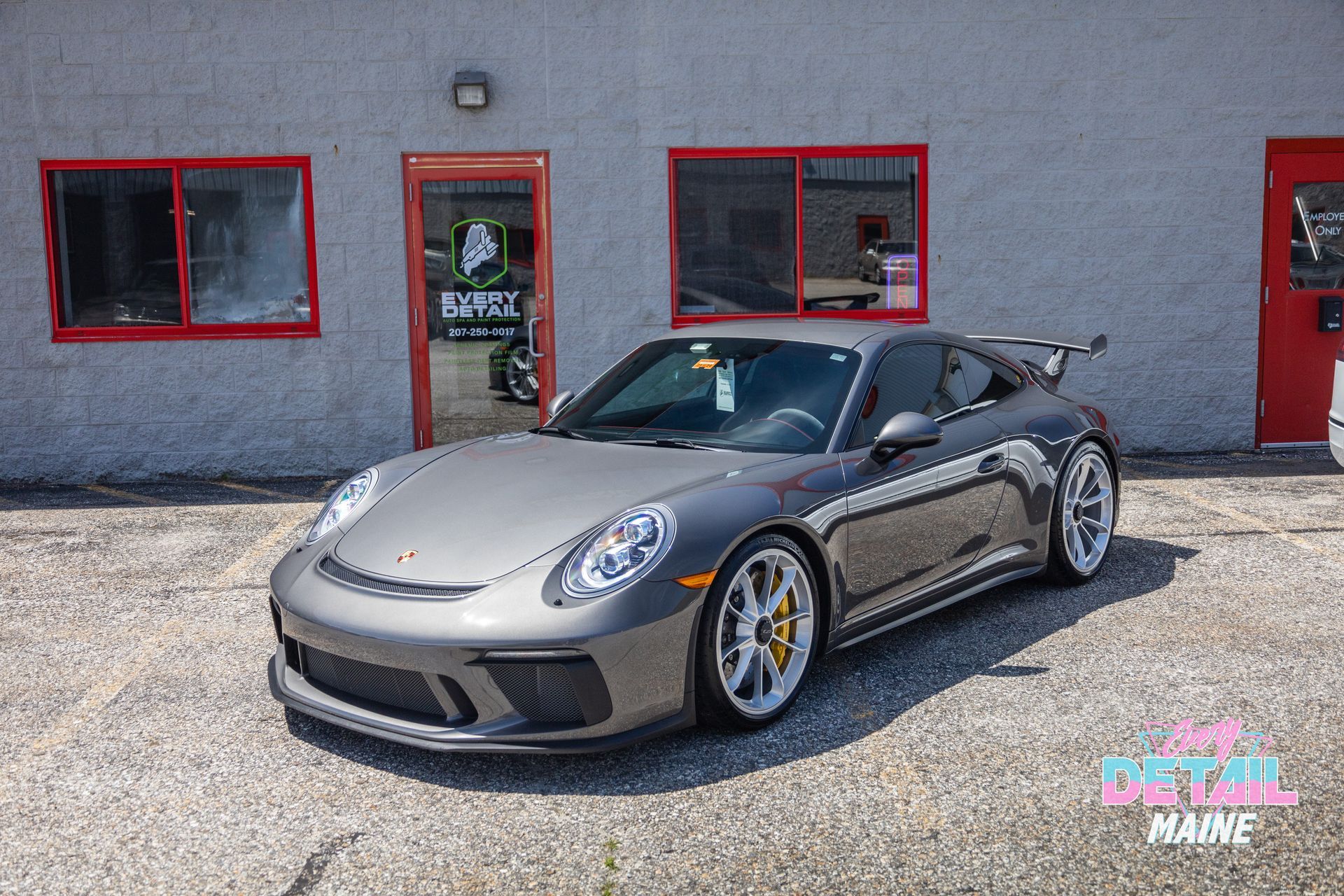Can PPF Be Applied to All Vehicle Types? Understanding Application on Cars, Trucks, and More
When it comes to keeping your vehicle looking sharp, every car owner wants tips that really work. For many, the first thought might be a good wax job or ceramic coating, but have you ever considered Paint Protection Film (PPF)? This innovative solution is like having a superhero shield for your car's paint, fighting off scratches, chips, and other threats while being almost invisible. It’s not just for fancy sports cars—PPF can benefit SUVs, trucks, motorcycles, and even those classic beauties gathering dust in the garage. So let’s dive into how PPF works, the different ways it can be applied across various vehicle types, and why this protective layer might be the investment you didn't know you needed.
Yes, Paint Protection Film (PPF) can be applied to all vehicle types, including cars, trucks, SUVs, and motorcycles. However, the effectiveness and installation process may vary based on the vehicle's surface materials and design features, so it's essential to consult with a professional installer for the best results tailored to your specific vehicle.
Exploring Paint Protection Film (PPF)
Paint Protection Film (PPF) is not just a fancy accessory for your vehicle; it's an essential defense line against everyday hazards that can ruin your car's finish. Originally developed for military applications to protect helicopter blades, PPF has evolved into a crucial component for automotive care. This transparent layer acts like a shield, providing robust protection against rock chips, scratches, and the harsh elements that you encounter on the road.
Composed primarily of high-quality polyurethane or polymer materials, PPF is designed for durability and resilience. What’s remarkable is that its construction allows it to resist yellowing from UV rays, maintaining its clear appearance long after application. Unlike older paint protection methods that could be visibly obtrusive, PPF is nearly invisible when applied correctly, blending seamlessly with your vehicle’s original paint job.
The strength of PPF lies in its ability to preserve the aesthetic charm of your vehicle while safeguarding it from potential damage. Imagine driving down a gravel road without worrying about chips or scuffs—this film provides peace of mind for car enthusiasts and daily commuters alike. Over time, you’ll notice how it enhances gloss and depth of color, ensuring your vehicle looks showroom-fresh even years after purchase.
Brands like XPEL, SunTek, and 3M have garnered praise for their reliable PPF products. Many offer warranties stretching up to ten years, reflecting their confidence in long-lasting performance. This protective layer isn’t just practical but also maintains the resale value of your vehicle over time. A well-protected car retains its visual appeal, translating into a more favorable price should you decide to sell or trade it in.
While these features showcase the benefits of PPF, understanding how it applies across different vehicle types can further enhance your decision-making process as you consider your options.
Application on Cars and Trucks
The most frequent application of PPF occurs on cars and trucks, leading to a diverse range of solutions customized for these vehicles. It’s essential to recognize that not every vehicle type requires the same strategy. The key is to focus on the specific areas that are most vulnerable to damage.
High-Traffic Areas
Concentrate on the high-traffic areas, which are often the frontline against chips and scratches. This includes parts like the front bumper, hood, and side mirrors. These areas consistently face more exposure to debris from the road, making them critical spots for your PPF investment. By prioritizing the application of PPF in these high-risk zones, you’re ensuring a robust defense against potential damage that could detract from your vehicle's appearance and resale value.
Tailored Kits
Another important consideration is opting for tailored PPF kits. Many manufacturers provide pre-cut options specifically molded for different car models. This approach minimizes installation complexity and reduces the risk of errors during application, as these kits perfectly match the contours of your vehicle. Engaging with these tailored kits allows amateurs and professionals alike to achieve seamless results that look as if they originated straight from the factory.
When you choose a reputable brand such as 3M or XPEL, you’re investing in quality materials designed specifically to withstand environmental hazards while providing good visibility over time. Thus, installing the right type of PPF enhances not just appearance but also offers peace of mind when traversing harsh driving conditions. As we explore further applications of Paint Protection Film, it's essential to understand how it can effectively safeguard other types of vehicles like motorcycles.
Using PPF on Motorcycles
Paint Protection Film (PPF) has become a game changer for motorcycle enthusiasts who seek to preserve the beauty and integrity of their bikes. With the intricate designs and exposed components typical of motorcycles, these vehicles are particularly vulnerable to scratches, nicks, and unsightly wear from road debris. This is precisely why applying PPF isn't just a good idea—it's an investment in both aesthetics and long-term value.
Protection for Unique Shapes
Motorcycles come in all shapes and sizes, making their surfaces susceptible to damage like no other vehicle type. The fuel tank, fenders, and headlights are among the most targeted areas for PPF application. These components frequently face both environmental hazards and the effects of regular use by riders. For instance, the fuel tank often takes the brunt of wear and tear, particularly due to gear straps or even accidental contact from protective clothing. By covering these spots with a durable film, you can safeguard against minor impacts that could lead to deeper scratches or paint peeling over time.
Motorcycle-Specific Products
Thankfully, manufacturers have caught on to the specialized needs of motorcyclists, producing tailored PPF solutions designed specifically for these machines. Unlike universal products that might not fit snugly on every contour, these kits ensure comprehensive coverage where it's needed most while allowing for easy installation. But going beyond just shape considerations, many motorcycle-specific PPFs also come with built-in features like self-healing properties. This means that minor scratches can be mended using heat from either sunlight or a heat gun, keeping your motorcycle looking pristine between rides without extra hassle.
As you consider the best ways to protect your bike, there are additional factors to keep in mind regarding unique vehicles that often require specialized care. Let’s explore how to safeguard other distinct models more effectively.
Protecting Specialty Vehicles
Specialty vehicles, including classic cars, RVs, and luxury yachts, deserve special attention when it comes to protection. These vehicles represent significant investments and carry emotional value for their owners. When you think about the love and dedication involved in restoring a classic car or customizing an RV for long journeys, it’s clear that protecting them with Paint Protection Film (PPF) is a necessity.
Preserving High-Value Paint
High-end vehicles and classics often feature unique paint jobs that are as delicate as they are beautiful. Investing in PPF makes practical sense; it acts as a shield against harmful elements like road debris, weather conditions, and even bird droppings. For instance, consider a 1967 Ford Mustang; protecting such a classic with PPF not only safeguards its iconic colors but also preserves paint integrity that can significantly boost resale value. Imagine years down the line when you decide to sell that Mustang—buyers will notice whether the paint has been maintained well or shows signs of wear. Now let’s broaden our focus to some other specialty vehicles where PPF plays an equally crucial role.
As we explore the methods and techniques surrounding this protective application, it's important to understand what steps lead to effectively safeguarding these treasured vehicles.
Steps for Applying PPF
While applying PPF might seem like a challenging task, following a structured process can lead to impressive results that elevate your vehicle's protection and aesthetics. Let’s break down these steps.
- Surface Preparation: The first and arguably the most critical step is surface preparation. This sets the foundation for successful adhesion of the film. Start by thoroughly washing your vehicle to eliminate dirt, grime, or old wax that could interfere with how well the PPF sticks. Skipping this part only leads to headaches later; dust and residue can create bubbles beneath the film that are nearly impossible to remove. Ideally, use a gentle automotive soap paired with a soft sponge to avoid scratching the surface. Rinse thoroughly, and after washing, drying with a clean microfiber towel will help ensure a spotless finish. Once the car is clean and dry, we’re ready to prepare the application solution.
- Application Solution: For Step 2, mix a solution of water and a few drops of baby shampoo in a spray bottle. This simple concoction serves as a lubricant and helps you position the film more easily during application. The soapy water reduces friction between the film and the vehicle, allowing adjustments without tearing Tip: Use distilled water if possible, as tap water may contain minerals that could leave behind spots or residues. With our solution prepped, it’s time to apply the film itself.
- Applying the Film: In Step 3, grab the PPF and peel back its protective backing carefully. This can be tricky, especially with larger pieces—patience is key! Spray both the adhesive side of the film and the area of your vehicle where you'll place it with your application solution. The mist keeps things slippery as you align everything just right. As you lay down the film, take care to align it with existing body lines or edges for a professional finish. Don’t rush—it's completely normal to reposition it several times. Now that we have positioned our film accurately, it’s important to eliminate any air pockets.
- Squeegee Out Bubbles: Here comes Step 4, which involves using a squeegee to push out air bubbles and excess solution trapped beneath the film. Start at the center of your applied film and work outward toward the edges. Maintain gentle but firm pressure to avoid tearing while keeping everything lubricated with your solution. This is another part where taking your time pays off. If you encounter stubborn bubbles that refuse to budge, gently lift that section of film without stretching it to release trapped air before resmoothing. Every pass should move outward—this prevents new bubbles from forming. After squeezing out all those pesky bubbles, it's crucial to conduct a final review.
- Final Inspection: In our last step, final inspection allows you to ensure everything is just right. Take a careful look at your application and check for remaining bubbles or misalignments. If you spot any imperfections, don’t fret; simply lift that segment of the film cautiously and reapply without stretching during adjustment.
A keen eye during this phase really does make all the difference. Remember: a little patience here goes a long way toward achieving that flawless look you're after! With successful application complete, it's worthwhile to explore scenarios where this protective measure may not be ideal.
When PPF Isn't Ideal
While Paint Protection Film (PPF) offers a myriad of benefits, it’s not a universal solution for every vehicle or situation. In some cases, certain vehicles may not warrant the investment in PPF. For instance, if a vehicle is newer and has pristine paintwork, alternatives like ceramic coatings or frequent wax applications could provide sufficient protection without the hefty price tag. Cost-effectiveness often plays a significant role in decision-making, and sometimes less expensive methods can suffice for regular drivers.
Moreover, consider the age and condition of your vehicle. Picture an older car with worn-out or chipped paint. Applying PPF might not offer the desired effect; rather than cloaking imperfections, it could inadvertently accentuate them. This reality is important because vehicle owners are often attracted to PPF's promise of a flawless finish; however, on older vehicles, it may produce the opposite outcome they seek.
Cost Implications
Another critical factor is the financial aspect associated with PPF application. The expense can be quite significant—professional installations often range from $2,000 to $10,000 depending on factors like the size of the vehicle and type of film used. With such high costs, many vehicle owners may feel hesitant to proceed. It's not just about purchasing the film; it’s also about investing in professional labor to guarantee quality installation, which ultimately adds more weight to the decision-making process.
By weighing these considerations—like vehicle condition, surface needs, and cost—you can make a more informed choice about whether PPF is right for your specific circumstances or if alternative solutions might serve better.
In summary, understanding your vehicle's specific needs and your budget will guide you in choosing the best protection method for your investment. Always consider alternatives that suit the condition of your vehicle while providing adequate safeguarding against wear and tear.
Protect Your Investment with Precision PPF Application
At Every Detail in Portland, ME, we specialize in providing top-notch paint protection film (PPF) services to safeguard your vehicle from the elements, road debris, and everyday wear. Our expertly applied PPF offers an invisible shield that maintains your car’s sleek appearance while preserving its paintwork. Designed to resist scratches and chips, this protective layer ensures your vehicle stays looking brand new for years to come. Trust our skilled technicians to apply the highest quality PPF, tailored to your vehicle’s specific needs. Contact us today to secure your vehicle’s protection and keep its finish flawless!

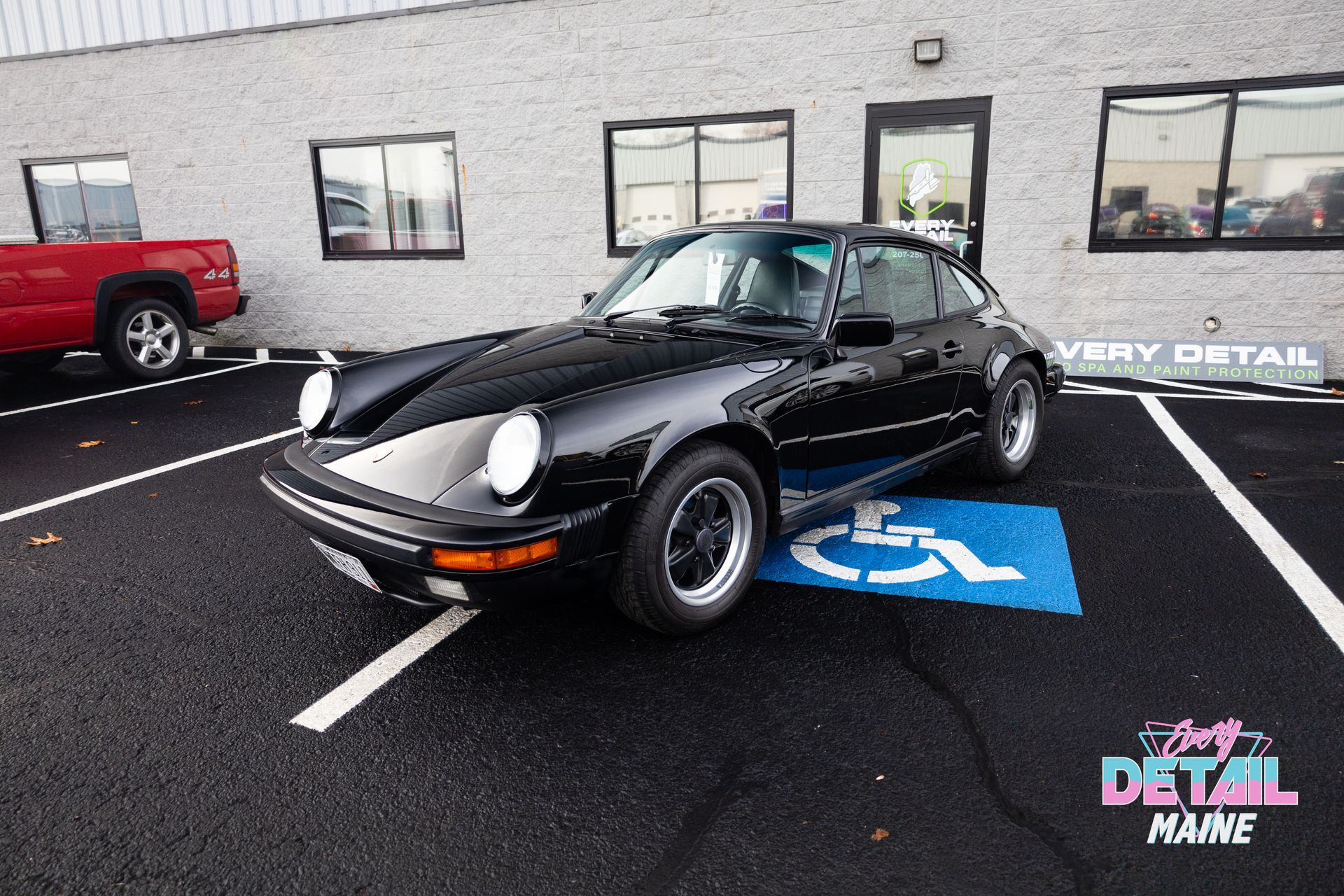
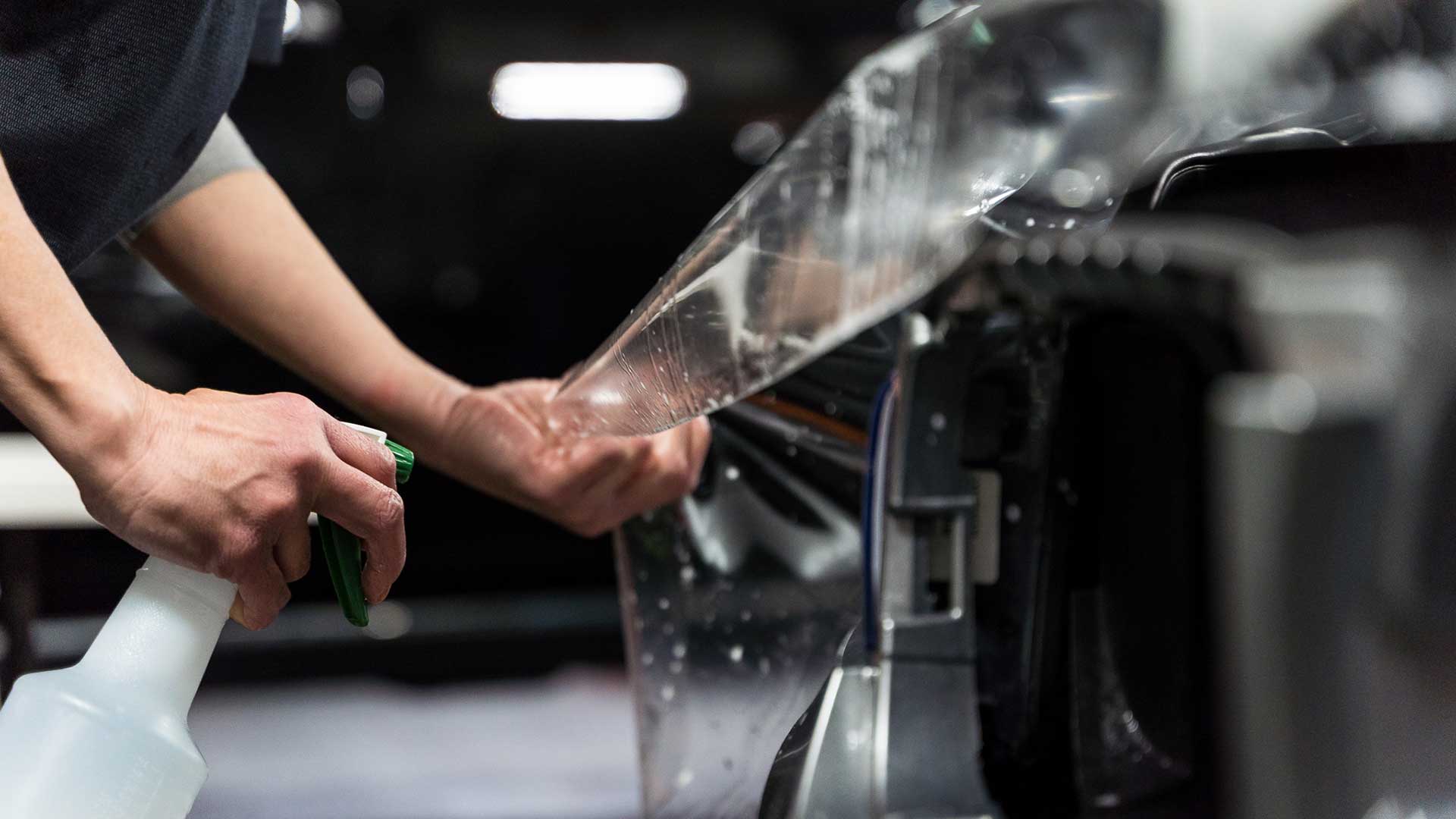
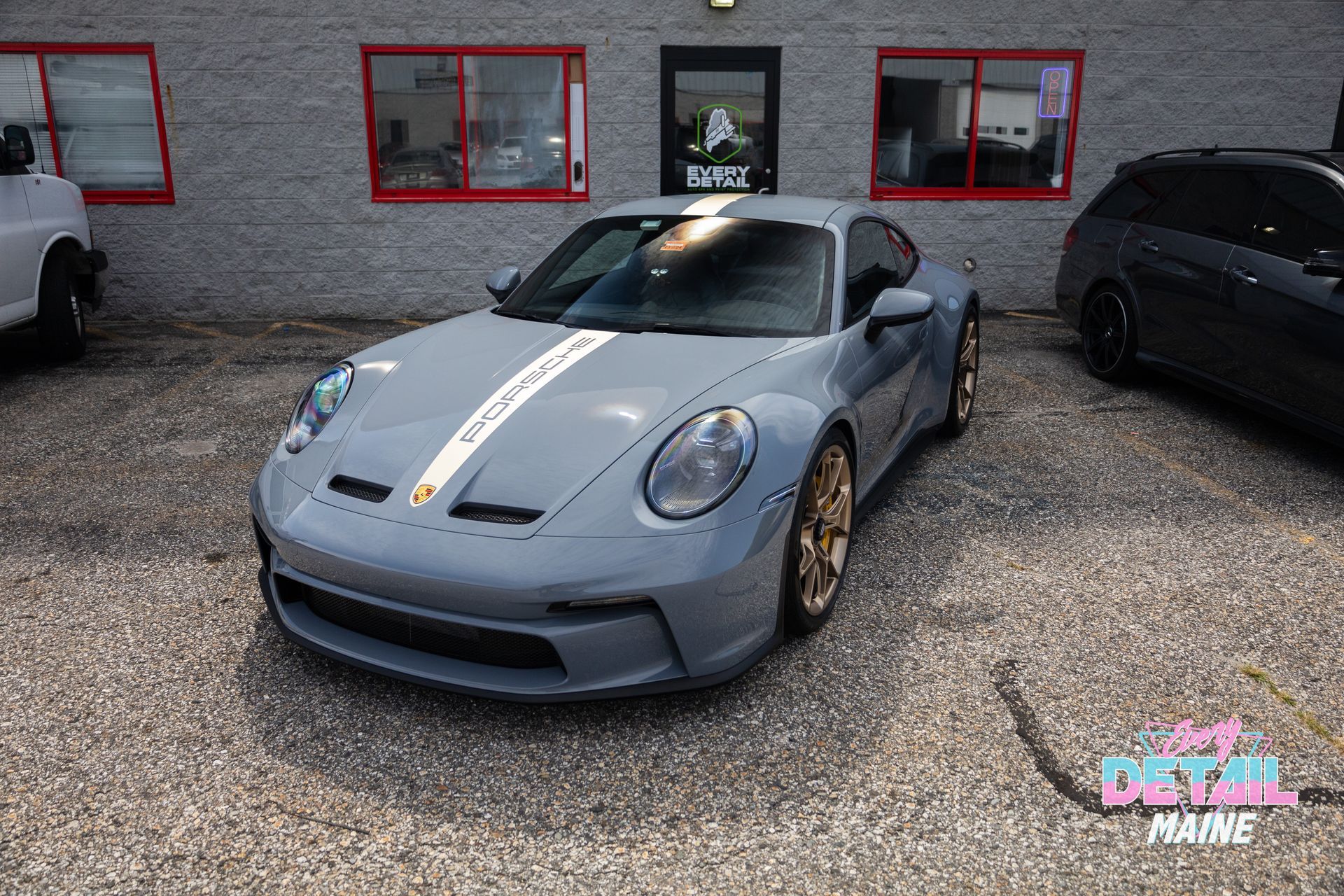

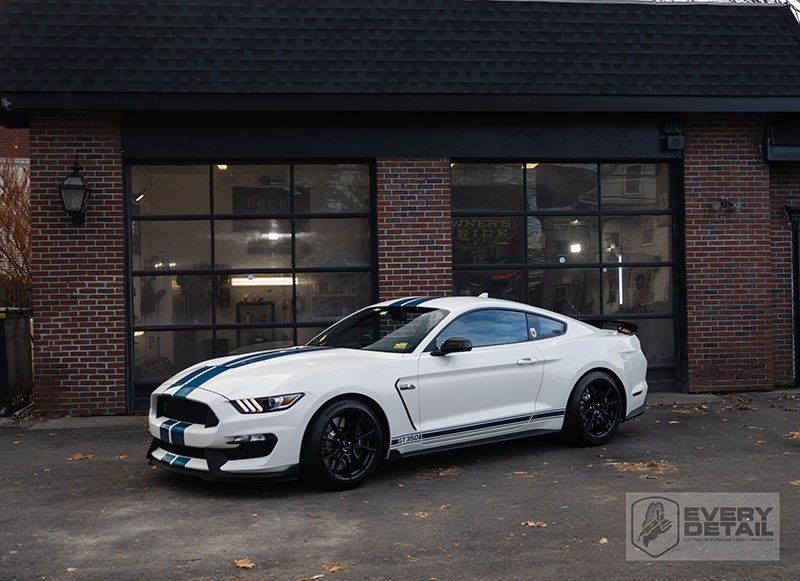
ABOUT US
Every Detail has spent several years in the automotive detailing business building a trusted team of paint protection professionals and vehicle detailers that can guarantee that your automobile will look brand new when leaving our Portland, ME shop. We offer long-term ceramic coatings and clear bras to keep your paintwork fresh and glossy, intricate interior and exterior vehicle detailing services that restore and protect, and a paint correction process remedying even the worst surface defects. Choose Every Detail today and experience the difference!
QUICK LINKS
This website was designed by the team at Detailers Roadmap, a platform developed for detailing operators across the globe.
Photography rights and license from EL.Photos & Xyooj Media
All Rights Reserved | 8bitcreative, LLC | Every Detail



